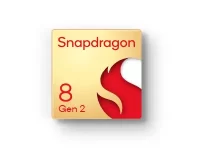(Auszug aus der Pressemitteilung)
San Jose, CA, November 29, 2005 – Samsung Electronics Co., Ltd., the
the majority of graphics memory for the launch phase of Microsoft
Corporation’s state-of-the-art Xbox 360 multimedia console.
Running at 700 MHz, the Samsung 512megabit (16Mbx32) GDDR3 will transmit
data at 5.6GBps (gigabytes per second) per chip – 3.5 times faster than
the memory used in the first Xbox – enabling real-time generation of
near-cinematic animation in games. At a system level, the 512Mb density
will allow the Xbox 360 to provide eight times the capacity of the first
Xbox(r) to store highly detailed textures that depict more life-like
images. The higher transmission speed and additional capacity also will
accommodate expanded image processing needs anticipated for storing
electronically-formatted photographs, movies, music videos and other
compressed video files.
“We’re very pleased that Samsung has been able to provide us with a
majority of the graphics memory needed during the Xbox 360’s ramp-up
stage. GDDR3 is a critical factor in enabling us to provide the best
overall gaming and entertainment experience,” said Greg Gibson, director
of Console Development, Microsoft.
The Samsung graphics memory is built on industry-leading 90 nanometer
(nm) process technology using 300 millimeter (mm) wafers. It will
interface with a graphics processor co-developed by Microsoft and ATI
Technologies, Inc.
“We’re thrilled to work with Microsoft to provide the most popular,
high-end graphics memory made today, Samsung’s GDDR3, which will be a
part of the first true multimedia entertainment console for consumers,”
said Nam Young Cho, Executive Vice President, Global Sales & Marketing,
Samsung Electronics.
Samsung said its graphics expertise and manufacturing capabilities
provide Microsoft with the highest quality graphics memory, while
meeting the Xbox 360’s challenging high-volume production requirements.





Neueste Kommentare
22. Juli 2024
16. Juli 2024
15. Juli 2024
9. Juli 2024
4. Juli 2024
3. Juli 2024